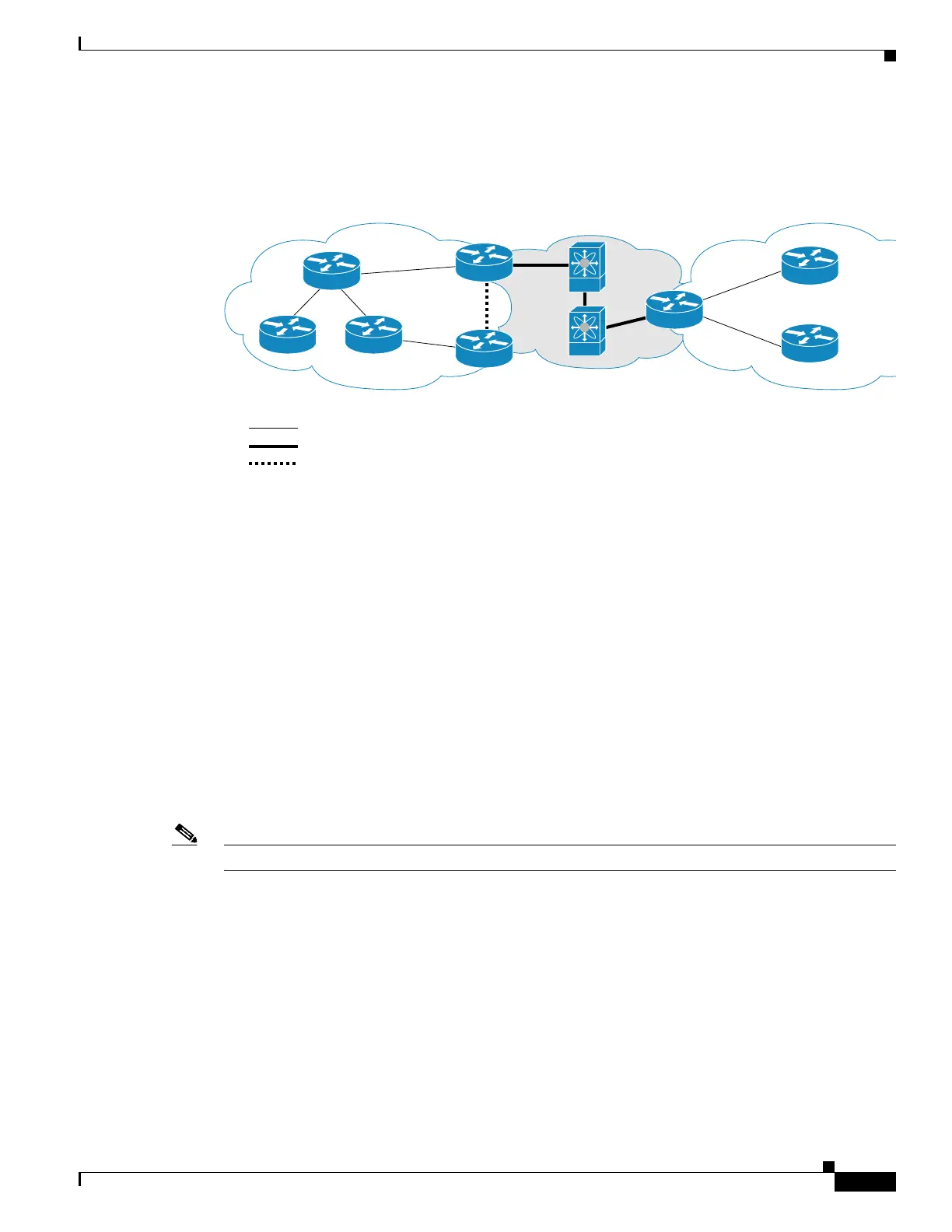Send document comments to nexus7k-docfeedback@cisco.com.
9-3
Cisco Nexus 7000 Series NX-OS Unicast Routing Configuration Guide, Release 4.x
OL-20002-02
Chapter 9 Configuring IS-IS
Information about IS-IS
Each IS-IS instance in Cisco NX-OS supports either a single Level 1 or Level 2 area, or one of each. By
default, all IS-IS instances automatically support Level 1 and Level 2 routing.
Figure 9-1 IS-IS Network Divided into Areas
An autonomous system boundary router (ASBR) advertises external destinations throughout the IS-IS
autonomous system. External routes are the routes redistributed into IS-IS from any other protocol.
NET and System ID
Each IS-IS instance has an associated network entity title (NET). The NET is comprised of the IS-IS
system ID, which uniquely identifies this IS-IS instance in the area and the area ID. For example, if the
NET is 47.0004.004d.0001.0001.0c11.1111.00, then the system ID is 0000.0c11.1111.00 and the area is
ID 47.0004.004d.0001.
Designated Intermediate System
IS-IS uses a designated intermediate system (DIS) in broadcast networks to prevent each router from
forming unnecessary links with every other router on the broadcast network. IS-IS routers send LSPs to
the DIS, which manages all the link-state information for the broadcast network. You can configure the
IS-IS priority which IS-IS uses to select the DIS in an area.
Note No DIS is required on a point-to-point network.
IS-IS Authentication
You can configure authentication to control adjacencies and the exchange of LSPs. Routers that want to
become neighbors must exchange the same password for their configured level of authentication. IS-IS
blocks a router that does not have the correct password. You can configure IS-IS authentication globally
or for an individual interface for Level 1, Level 2, or both Level 1/Level 2 routing.
IS-IS supports the following authentication methods:
• Clear text—All packets exchanged carry a cleartext 128-bit password.
• MD5 digest—All packets exchanged carry a message digest that is based on a 128-bit key.
L1 IS L1 IS
L1 IS
L1-2 IS
L1-2 IS
L1-2 IS
L1 IS L1 IS
L2 IS
L2 IS
L1 link
L2 link
L1-2 link
185054

